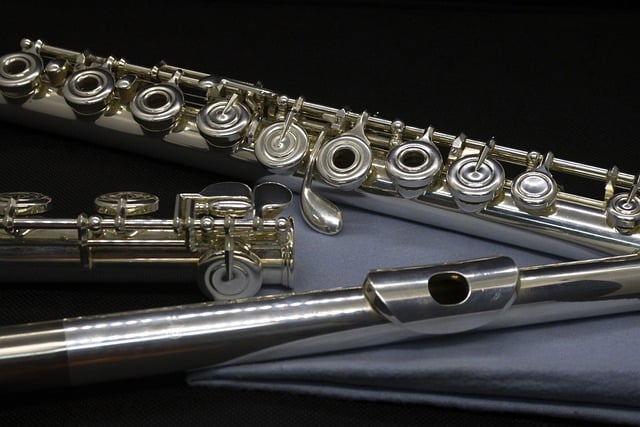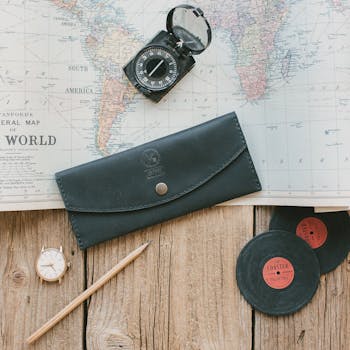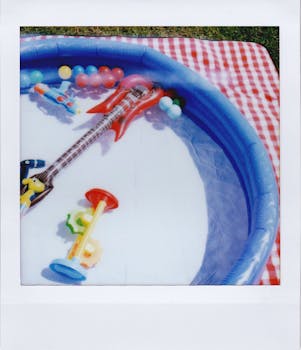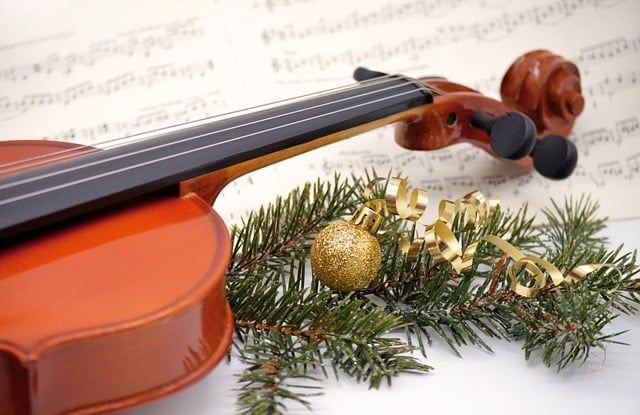Musical Instruments Puzzle
As an Amazon Services LLC Associates Program participant, we earn advertising fees by linking to Amazon, at no extra cost to you.
Popular Woodwinds and Their Characteristics
Explore some of the most commonly played woodwind instruments, each with its unique voice and characteristics.
- Flute: The flute is known for its bright and airy sound. It’s played by blowing air across an opening, making it one of the few woodwinds without a reed. I love how versatile it is, fitting seamlessly in classical, jazz, and even pop music.
- Clarinet: The clarinet has a rich, warm tone thanks to its single reed. With its extensive range, it can sound both mellow in the lower register and brilliant in the upper. I find it to be incredibly expressive in both orchestral and solo performances.
- Saxophone: The saxophone stands out for its jazzy, soulful character. With its conical shape and use of a single reed, it produces a sound that’s both powerful and smooth. Personally, I associate it with some of the best moments in contemporary music.
- Oboe: The oboe is quite distinct with its double reed and sharp, penetrating tone. Its unique sound often evokes strong emotional responses. I appreciate its role in orchestral settings, where it frequently leads melodies.
- Bassoon: The bassoon has a deep, resonant sound that adds richness to ensembles. As another double reed instrument, it’s known for its comedic and whimsical qualities, which I find charming. Its range can be surprisingly versatile, fitting into various genres.
Types of String Instruments
String instruments create music through the vibration of strings. Each type has unique characteristics and tonal qualities that contribute to a wide variety of musical styles.
- Violin: The violin is the most prominent member of the string family, known for its expressive range and is a staple in both classical and folk music. Its high-pitched voice often leads melodies.
- Cello: A beautiful instrument with a rich, deep sound, the cello plays both melodic and harmonic roles. Its versatility allows it to shine in orchestras and solo performances alike.
- Double Bass: The largest string instrument produces the lowest pitches and provides rhythmic and harmonic foundation in various ensembles, from orchestras to jazz bands.
- Guitar: From acoustic to electric, the guitar is one of the most versatile instruments out there. I appreciate its ability to cater to multiple genres—from rock to classical.
- Harp: The harp captivates with its ethereal sound and intricate playing techniques. Its use in orchestras and solo performances offers a stunning auditory experience.
- Mandolin: This instrument adds a bright, cutting tone and is essential in bluegrass and traditional folk music, showcasing a unique charm that is hard to resist.
- Banjo: The banjo delivers a distinctive twang that energizes folk, bluegrass, and country music. Its lively character often makes it a standout in ensemble settings.
- Lute: A historical instrument with a soft, delicate sound, the lute is beautifully intricate. Its place in Renaissance and Baroque music is remarkably significant.
Essential Accessories for Musicians
Every musician knows that having the right accessories can make a world of difference. Here are some must-have items that I believe every artist should consider.
- Quality Tuners: A precise tuner ensures that your instrument is always at the perfect pitch, which can enhance your overall sound and performance.
- Instrument Cases: A durable case protects your gear from the rigors of travel and storage, preserving its quality and longevity.
- Metronomes: Keeping time is crucial. A reliable metronome helps in developing a solid sense of rhythm, essential for any musician.
- Extra Strings/Accessories: Breakages happen, and having spare strings or picks on hand means interruptions to your playing are minimized.
- Music Stands: A sturdy stand allows for comfortable reading of sheets, ensuring that you can focus on your performance, not struggling to hold your music.
- Headphones: Quality headphones are vital for practice and recording, providing accurate sound reproduction that can improve your listening skills.
- Cables and Adapters: For electric musicians, having a variety of cables and adapters at your disposal ensures that you’re ready for any setup.
- Cleaning Kits: Regular maintenance keeps your instrument in top shape. A good cleaning kit is essential for prolonging the life of your gear.
Review: Top 5 Beginner Instruments
As someone who has explored various instruments, I’ve narrowed down a list of five that truly stand out for beginners.These instruments not only offer ease of learning but also ignite passion and creativity.
1. Ukulele: The ukulele is my top pick for beginners. Its lightweight design and four strings make it incredibly user-friendly. You can easily learn simple chords, which allows for quick song playing. Plus, the ukulele has a cheerful sound that lifts your spirits as you strum along!
2. Keyboard: Whether you choose a full-size keyboard or a compact digital piano, it’s an excellent starting point. The keys are laid out in a straightforward manner, making it easier to grasp the fundamentals of music theory. The ability to play multiple sounds and rhythms also keeps things interesting.
3. Acoustic Guitar: There’s something timeless about learning the acoustic guitar. With six strings, it’s versatile, allowing you to play various genres from folk to rock. It’s a bit more challenging than a ukulele, but the payoff in creating beautiful music is worthwhile. Start with open chords, and you’ll be amazed at how quickly you progress.
4. Recorder: The recorder is often underrated but serves as a fantastic introduction to wind instruments. It’s affordable and easy to play, making it ideal for those who want to learn about breath control and finger positioning without too much effort. Plus, it’s great for understanding musical notation!
5. Cajón: If rhythm calls to you, try the cajón. This box-shaped percussion instrument is simple to play and can enhance your sense of timing. You can easily produce various sounds through different strikes. It’s perfect for anyone looking to develop their rhythmic skills without diving into a full drum set.
Choosing an instrument that resonates with you is crucial. Each of these options brings unique rewards and enjoyable experiences. As you consider your path in music, remember that the joy of playing is what ultimately matters!
Buy Melissa & Doug Musical Instruments Sound Puzzle – Wooden Peg Puzzle (8 pcs) – Wooden Peg Chunky Baby Puzzle, Music Learning Toys, Musical Sound Puzzles …
Melissa & Doug Musical Instruments Sound Puzzle … – Amazon.com
Jan 28, 2013 … Free Printable Word Search Puzzle Musical Instruments and Download free Word Search Puzzle Musical Instruments along with coloring pages for …
Download Free Word Search Puzzle Musical Instruments for kids
Jan 7, 2022 …Music is the jigsaw puzzle that most people don't attempt. Question. Most of us have the box-lid picture in our heads already because we've …
Music is the jigsaw puzzle that most people don’t attempt. : r …
A fun, free printable crossword puzzle worksheet featuring musical instruments for elementary school students or anyone looking for to review their knowledge …
Nov 19, 2018 … Your students will enjoy looking for all of the musical instruments hidden in this fun puzzle worksheet. Puzzles make fun no prep activities …
FREE Musical Instruments Word Search Puzzle Worksheet Activity
The Role of Musical Instruments in Culture
Musical instruments have always been intricately tied to the identity of cultures around the world. They serve as a means of expression, storytelling, and celebration, reflecting the unique histories and values of different societies. From the haunting notes of an Irish fiddle to the rhythmic beats of a West African drum, instruments embody the spirit and traditions of their respective cultures.
Consider how indigenous cultures use instruments in rituals. In many Native American tribes, flutes and drums aren’t merely tools for entertainment—they are sacred instruments that connect the community with their spiritual beliefs. Similarly, the didgeridoo in Australian Aboriginal culture is not just an instrument; it carries ancestral stories through its sounds, reinforcing the bond with the land.
In contemporary society, musical instruments play a crucial role in cultural movements. Genres like jazz, rock, and hip-hop have transformed social landscapes and articulated the experiences of marginalized voices. Instruments such as the electric guitar became symbols of rebellion and freedom, echoing the desires and struggles of generations.
Furthermore, instruments contribute to cross-cultural exchanges. The globalization of music has led to fascinating hybrids like reggae fusion and K-pop, where traditional elements mix with contemporary styles. This evolution of sound encourages appreciation for diverse musical traditions and helps build bridges between cultures.
Ultimately, every instrument tells a story. Whether it’s the craftsmanship behind a handcrafted sitar, the evolution of the piano through history, or the innovation of digital music production tools, each aspect plays a role in shaping cultural narratives. Engaging with musical instruments allows us to connect with multiple histories and perspectives, enriching our understanding of art and society.
Connecting with Music: Emotional Benefits
Music has an unparalleled ability to impact our emotions. When I pick up my guitar or sit at the piano, I feel an immediate shift. The strings vibrate, the keys resonate, and suddenly, the weight of the world lessens. Playing an instrument is a form of self-expression that transcends language. It allows me to convey feelings that are often difficult to articulate in words. Whether it’s the strum of a chord or the melancholy cry of a violin, each note embodies emotion, crafting a narrative unique to the player.
Engaging with music also significantly reduces stress. On days when anxiety seems overwhelming, the act of playing my flute offers solace. Music serves as a powerful tool for relaxation, providing a mental escape. The repetitive patterns and melodies can calm racing thoughts and ground me in the present moment. This therapeutic quality of sound is often overlooked yet vital for emotional health.
Moreover, the community surrounding music is immensely supportive. Whether it’s jamming with friends or participating in a local ensemble, the camaraderie forged through shared musical experiences cultivates a sense of belonging. These connections foster friendships that support our emotional well-being. The thrill of performing in front of an audience—or even just in front of family—can ignite exhilarating joy. This social interaction emphasizes how music brings us together, allowing us to bond over shared passions.
Finally, learning an instrument is an incredible confidence booster. Each new skill acquired or song mastered fuels a sense of accomplishment. This boost translates directly into emotional resilience, preparing me to tackle other challenges in life. The dedication required to practice and improve cultivates patience and perseverance. These qualities are as enriching emotionally as they are practically.
Ultimately, the emotional benefits of connecting with music through instruments like the piano, guitar, or drums are profound. The experience shapes who I am, providing a canvas for my feelings, a method for stress relief, connections with others, and confidence in my abilities. Music doesn’t just enhance life; it enriches the soul.
Mar 26, 2019 … Hay included a fun wrinkle in his New York Times crossword: each answer is a homophone of B. A few examples: Benadryl might treat them (bee …
High note: Music major’s crossword puzzle lands in New York Times …
Russian Music Activities. Fun activities for different age groups! Elementary. Russian Musical Instruments Word Search Puzzle (printable …
The Puzzle of Instrument Repair Staring down at a table full of loose instrument … While in Baltimore, he also worked for a retailer selling musical instruments …
Sep 18, 2009 … Ok…I'm a self-professed "jock". I don't own a band instrument, I can't read music, I can't dance and I can't count in rhythm.
Dear Knight Fan: Don’t Miss Marching Band | University of Central …
The Anatomy of a Grand Piano
A grand piano is a marvel of engineering and artistry, consisting of several key components that work together to produce its rich sound. At the heart of its structure is the solid wooden frame, which provides stability and resonance. This frame supports the soundboard—a large, thin piece of wood that vibrates when the strings are struck, amplifying the sound.
The strings themselves are a critical element, typically made of high-quality steel for the treble and wound with copper for the bass. The tension of these strings varies, creating different notes when played. The placement and length of the strings directly affect the piano’s tonal qualities.
The hammers, crafted from felt-covered wood, rest just in front of the strings. When a key is pressed, a mechanism called the action brings the hammer down, striking the string and producing sound. This action mechanism is intricate, allowing the player to control dynamics and expressiveness.
The pedals also play a crucial role. The right pedal, known as the sustain pedal, lifts the dampers off the strings, allowing notes to ring out longer. The left pedal, or soft pedal, shifts the hammers closer to the strings, producing a softer sound. The middle pedal, less commonly used, can sustain selected notes while others are struck. Each pedal enriches the overall playing experience, providing additional expressive options.
The overall design of the grand piano, including its length and shape, contributes significantly to its sound quality. Larger grand pianos tend to have richer tones due to longer strings and a larger soundboard. This design complexity and craftsmanship make the grand piano a prized possession for musicians.
Exploring the Evolution of Musical Instruments
The evolution of musical instruments is a fascinating journey that reflects not only technological advancements but also cultural shifts. Instruments have transformed from rudimentary designs made of natural materials to sophisticated creations that blend artistry with technology. For instance, the piano was birthed in the early 18th century, innovating upon the harpsichord and clavichord. This evolution allowed composers to explore dynamics in ways previously unimaginable, creating a new era of expressive music.
The electric guitar revolutionized music in the 20th century, introducing sounds that shaped genres like rock and blues. Its design has undergone significant changes, from early models to modern variations that offer limitless tonal possibilities. The transition from acoustic to electric not only changed how music was made but expanded what was musically possible.
Looking at the string family, the violin has remained largely unchanged for centuries, yet its role has evolved dramatically within orchestras and chamber music. Today, it is not only a staple in classical music but also embraces genres like jazz and folk. Similarly, instruments like the flute have adapted from wood to metal, improving durability and sound quality without losing their historical essence.
Percussion instruments also showcase this evolution. Traditional drums have seen innovations that allow for electronic variations, enabling musicians to explore a vast array of beats and styles. The advent of electronic drum kits has transformed how percussion is approached, blurring the lines between genres.
Understanding the evolution of these instruments is crucial for musicians as it broadens their appreciation for various playing techniques and the historical context of their music. This knowledge can inspire creativity, encouraging musicians to experiment with both traditional and contemporary styles. The evolution of musical instruments not only shapes the sound we hear but also influences how music is created, performed, and experienced.
The Versatility of Flutes
Flutes are among the most versatile instruments in the musical world. Their unique design allows them to be adapted for various styles, from classical to jazz, folk, and even contemporary pop music. I’ve personally experienced how each genre can transform the way the flute is played and heard. For instance, in classical music, the flute can evoke a sense of elegance and purity. The melodic lines soar beautifully, often playing intricate harmonies alongside strings or woodwinds.
Jazz introduced me to a whole new realm of improvisation. I was astonished by how flutes can contribute to complex, syncopated rhythms while also carrying the main melody. The rich tones and ability to bend notes make the flute a perfect partner for jazz standards. This adaptability not only highlights the player’s skill but also captures the spirit of spontaneity inherent in jazz.
Then there’s the world of world music. Flutes come in countless forms globally, like the Indian bansuri or the Native American flute, each bringing its cultural textures and techniques. Exploring them opened my ears; I found that each flute tells its own story through musical traditions. The use of breath control and different fingerings can create haunting melodies or lively dance tunes.
Moreover, the rise of contemporary music has led to an increased presence of flutes in rock and electronic genres. It’s fascinating to witness how musicians incorporate these traditional instruments with modern technology and effects, resulting in innovative sounds. Whether it’s through electronic beats or layered with synthesizers, the flute finds its way into unexpected auditory landscapes.
Personally, I believe that the diversity in flute compositions challenges players to explore beyond their comfort zones. Flutes can mimic the human voice, and this quality enables them to convey profound emotion in any context. Each time I pick up my flute, I’m reminded that its versatility isn’t just about the music styles it can perform; it’s a reflection of the instrument’s capacity to resonate with listeners across cultures and generations. This breadth allows players at any level to experiment and find their own unique sound.
Common Mistakes Beginners Make
Identifying typical pitfalls that novice musicians encounter as they start their musical journey.
- Ignoring Proper Technique: Many beginners overlook the importance of developing solid foundational techniques. Whether it’s finger positioning on a guitar or bowing strokes on a violin, improper technique can lead to bad habits that are hard to break later on.
- Skipping the Basics: I often see beginners jumping straight into complex pieces or riffs without mastering simple scales or chords. This can be frustrating and discouraging, as it’s vital to build confidence through small victories.
- Avoiding Music Theory: Some think music theory is boring or unnecessary, but understanding the basics like note values, scales, and key signatures can significantly enhance a player’s ability to improvise and compose.
- Neglecting to Practice Regularly: Consistency is crucial for progress. Beginners might practice intensively one week and skip the next, which stunts development. Regular, focused practice sessions yield better results.
- Not Listening to Music: A common mistake is failing to immerse oneself in music. Listening to various styles can inspire and help beginners internalize rhythms and melodies, enhancing their overall musicianship.
- Being Too Hard on Themselves: Practicing music takes time and patience. Beginners often get frustrated with their progress, leading to self-doubt. Recognizing that mastery comes gradually helps maintain motivation.
Tips for Choosing Your First Instrument
Choosing your first musical instrument is a significant decision, and there are several factors to consider. First, consider your personal interests and musical preferences. If you love classical music, a violin or piano might resonate with you. On the other hand, if you’re into rock or pop, an electric guitar or drum set could be more appealing.
Next, think about the physical demands of the instrument. Some instruments can be quite physically demanding, so it’s crucial to pick one that you feel comfortable learning. For example, brass instruments often require good lung capacity, while string instruments can require manual dexterity.
Also, consider the size and portability of the instrument. If you plan to transport your instrument frequently, a smaller, lighter option like a ukulele or acoustic guitar might be better. Conversely, instruments like grand pianos can be stationary and space-consuming.
Another critical aspect is the cost. Instruments can vary in price significantly. Don’t break the bank on your first purchase; many affordable beginner models exist that still offer quality sound and durability. You might want to explore renting an instrument initially to see if you enjoy it without the commitment of a purchase.
Don’t forget to check for available resources such as instructors or online tutorials. Picking an instrument with abundant learning resources can expedite your progress and keep you motivated. Connecting with a local music community can also enhance your learning experience.
Lastly, always test out your options before committing. Many music stores allow you to try instruments before buying, so take advantage of that. Listen to how it sounds and consider how it feels in your hands. Choosing an instrument that resonates with you personally will make your musical adventure far more enjoyable.
Electric Guitars: A Modern Marvel
Electric guitars have revolutionized the way we think about music. From the moment I first picked one up, I was captivated by its ability to produce a diverse range of sounds, far beyond what an acoustic guitar can offer. These instruments combine intricate craftsmanship with remarkable technology, enabling musicians to explore new sonic landscapes.
What sets electric guitars apart is their use of pickups, which convert string vibrations into electrical signals. This innovation gives players the freedom to manipulate their tone through amplifiers and effects pedals, transforming simple melodies into powerful musical statements. The iconic sound of rock, blues, jazz, or metal is often defined by the electric guitar’s unique capabilities.
Every electric guitar has its own personality, largely defined by its construction materials and design. Solid-body, semi-hollow, and hollow body guitars each deliver different tonal qualities and sustain lengths. I personally favor the crisp and biting tone of a solid-body guitar, especially for high-gain settings.
Brands like Fender, Gibson, and Ibanez offer instruments that have become staples for professional musicians. Let’s talk about the Fender Stratocaster; its contoured body is not only visually appealing but also incredibly comfortable to play. The Strat’s versatility allows it to excel in various genres, making it a top choice for countless artists.
Guitars also come with various pickups, like single-coils and humbuckers, each with distinctive tonal characteristics. Single-coils provide a bright and airy sound, while humbuckers offer a thicker, warmer tone. Choosing the right pickup configuration can completely alter your musical expression.
The electric guitar has expanded artistic boundaries, allowing for styles like shredding and tapping. These techniques were virtually absent in previous music eras, showcasing the electric guitar’s pivotal role in modern music. From advanced chord progressions to intricate solos, almost every genre has found a way to incorporate this incredible instrument.
In conclusion, the electric guitar stands as a symbol of musical innovation. It constantly challenges musicians to experiment and redefine their sound. The electric guitar isn’t just an instrument; it’s a conduit for creativity.
Building Your Drum Set: A Guide
Creating your perfect drum set is a deeply personal endeavor. First, consider the type of music you play; this will heavily influence your choice of drums. For rock or pop, a standard five-piece drum set typically suffices with a bass drum, snare, two toms, and a floor tom. If jazz is your style, a smaller set might be ideal for portability and quick setup.
Your next step is choosing the material of the drum shells. Birch and maple are the most common; birch provides a sharper sound suitable for brighter music, while maple offers warmth and depth. The sound of your drums can drastically change based on shell material, so choose wisely. For beginners, a good quality birch or mahogany set strikes a balance between affordability and sound quality.
Then, move on to the drum heads. The right drum heads can enhance the overall tonality of your set. Coated heads typically produce warmer sounds, while clear heads offer more projection. Experimenting with different head types can help you find your signature sound.
Don’t forget about hardware. Cymbals are essential; start with a good crash and ride cymbal. As you progress, you can expand your cymbal collection. Invest in solid hardware like stands and pedals since these elements are crucial for stability and performance. Quality hardware can make or break your playing experience.
Lastly, learn to tune your drums properly. Tuning can transform your sound entirely and is a skill every drummer should master. Begin by experimenting with even tension across the drum head and listen for the pitch that resonates with you. Tuning turns a good drum set into a great one.
As you build your drum set, trust your instincts. Finding the right combination of components that resonates with your personal touch is what makes drumming fulfilling.
Understanding Violin Techniques
Mastering the violin requires dedication and a clear understanding of various techniques. One of the fundamental techniques every violinist must grasp is the bowing technique, which includes various strokes such as staccato, legato, and spiccato. Each stroke produces a unique sound and expression, and knowing when to use them is crucial to enhance musicality.
Posture and grip cannot be overlooked. The way you hold the violin affects your tone and playability. A straight back and relaxed shoulders are essential. Your left-hand fingers should be positioned comfortably over the fingerboard, allowing for quick transitions and vibrato.
Vibrato adds warmth and emotion to notes. Achieving a good vibrato takes time; it involves oscillating your left hand while maintaining a firm yet flexible grip. Begin slowly, focusing on the motion of your wrist and fingers, as this is vital in developing a natural vibrato.
Additionally, intonation is key. It’s all about playing in tune, which can be challenging on instruments like the violin. Regularly practicing scales and double stops (playing two notes simultaneously) helps develop your ear and finger placement.
Don’t underestimate the power of bow pressure and speed. The amount of pressure you apply with the bow can change the dynamics of your playing. Experimenting with light and heavy pressure allows for a broad range of expressive sounds.
Other techniques like pizzicato (plucking the strings) and harmonics (producing high-pitched sounds using partial finger pressure) enrich your playing experience. Each technique adds layers and textures to your music.
Lastly, incorporating finger exercises and scales into your practice will build muscle memory and strengthen your fingers. Regularly cycling through different finger patterns makes a significant difference in agility and precision.
What is the best instrument for a beginner?
Choosing the best instrument for a beginner largely depends on personal interest and accessibility. For many, the acoustic guitar stands out as the perfect choice. It’s versatile, relatively affordable, and allows for immediate gratification, as you can strum basic chords right away. Moreover, it’s a social instrument that’s easy to take anywhere. If you’re drawn to melodic sounds, the keyboard or piano is another excellent option. Its visual layout makes understanding music theory easier, plus it offers a wide range of musical styles. If portability is crucial, consider starting with a ukulele; it’s light, budget-friendly, and great for quick learning. Drums are fantastic for those who enjoy rhythm and energy, but they require more space and are often a louder option. Ultimately, the best instrument is one that resonates with you, ensuring you remain engaged and motivated to practice.
What are the differences between acoustic and electric instruments?
Acoustic instruments produce sound naturally through physical vibration, while electric instruments rely on electronic amplification. For instance, when I play an acoustic guitar, the sound directly emanates from the strings resonating in the body. In contrast, with an electric guitar, I rely on pickups and amplifiers to project sound. This fundamental difference affects how each instrument responds to playing techniques. Acoustic instruments often have a warmer, richer tone, ideal for folk or classical styles, whereas electric instruments can produce a broader range of tones and effects, making them perfect for rock and pop. The playing environment matters too; acoustic instruments are usually more suited for smaller, intimate settings, while electric instruments thrive in louder venues. Another significant distinction is customization; electric instruments allow for extensive modification, from changing pickups to adding effects pedals, which is less common with acoustic instruments. Ultimately, the choice between acoustic and electric instruments depends on personal preference and the musical context.
Can playing an instrument improve my cognitive skills?
Absolutely, playing an instrument can significantly enhance cognitive skills. Research shows that musicians often display superior memory, attention, and problem-solving skills. When I learned to play the piano, I noticed a drastic improvement in my ability to focus and multitask. Reading sheet music engages different areas of the brain, boosting both analytical and creative thinking. The constant practice of coordinating hands and feet while reading notes sharpens motor skills and spatial-temporal abilities. Additionally, playing in a group promotes teamwork and enhances social cognition. Overall, the extensive brain activity involved in playing an instrument strengthens neural connections, leading to improved cognitive function. So, if you’re considering picking up that guitar or violin, know that it’s not just about making music—you’re also sharpening your mind.
How do I maintain my musical instrument?
Regular maintenance is the key to keeping your musical instrument in top shape. For string instruments like violins, change the strings regularly and wipe down the body with a soft cloth after each use to prevent rosin buildup. For brass instruments, thorough cleaning with warm water and soap can prevent corrosion—don’t forget the mouthpiece! Electric guitars require string changes and attention to the fretboard. Use a specialized cleaner to maintain the finish and keep those frets shiny. With woodwinds, swab the interior after playing to remove moisture. For pianos, dust the keys and consider a professional tuning at least twice a year. Drum sets should be regularly wiped down; use a soft cloth and avoid harsh chemicals. Ensure you check the tension of the drumheads for optimal sound. Finally, always store your instruments in a suitable environment, away from extreme temperatures and humidity. Consistent care will lead to better performance and longevity.
How do I choose the right size of instrument for me?
Choosing the right size of musical instrument is crucial, and it starts by recognizing your physical dimensions. For instance, when it comes to string instruments like violins or cellos, size matters for comfort and playability. Generally, children require smaller sizes, while adults should opt for full-size models. I recommend visiting a music store and trying different sizes to see which one feels right. For guitars, consider the neck width and body size; a smaller person might find a smaller body shape more comfortable while playing. If you’re shopping for a piano, the touch and size can also greatly affect your playing experience. Grand pianos occupy more space and require more reach, while uprights might suit smaller spaces better. For wind instruments, such as flutes and saxophones, hand size can influence your choice. Ultimately, it’s about how the instrument feels in your hands and whether you can comfortably reach all the notes. Don’t rush the process; finding the right fit can enhance your playing and enjoyment significantly.
**Every instrument carries a distinct narrative, shaped by culture and innovation.** For instance, the grand piano’s evolution from early keyboard instruments to its complex mechanics reflects centuries of musical exploration. **Understanding this history deepens our appreciation for the music we create.**
Familiarity with an instrument’s components dramatically improves technique. Knowing how each part influences sound helps target practice areas effectively. Mastery comes not just from playing but from understanding how different mechanisms work in harmony.
Choosing the right instrument is essential for a positive learning experience. A well-suited instrument can inspire creativity and boost motivation. Personally, I’ve seen how the right fit transforms how students engage with their music, making practice enjoyable rather than a chore.
Mastering any musical instrument requires steadfast practice and unwavering dedication. I’ve seen firsthand how commitment to daily practice leads to noticeable improvement. Whether it’s hitting the right notes on a grand piano or strumming chords on an electric guitar, consistency is what truly transforms your skills.
Instruments profoundly shape emotional expression in music. A grand piano conveys elegance and depth, while an electric guitar can evoke raw energy and rebellion. The timbre and range of each instrument offer unique avenues for communicating feelings, making the choice of instrument essential in artistic expression.
As an Amazon Services LLC Associates Program participant, we earn advertising fees by linking to Amazon, at no extra cost to you.









